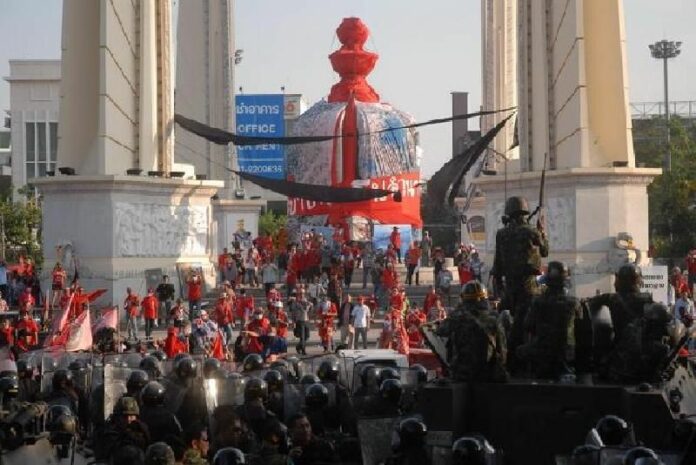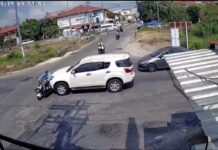
BANGKOK – An army officer whose unit was involved in the military crackdown on Redshirts protesters around Ratchadumnern Avenue on 10 April 2010 testified to the court that the military were not responsible for the death of a Japanese reporter on that day.
He also told the court that the reporter, Mr. Hiroyuki Muramoto, who was employed by Reuters at the time, was likely shot to death by armed elements of the protesters known as the "Blackshirts."
The military operation on 10 Apri 2010 was authorized by then-PM Abhisit Vejjajeeva in order to disperse thousands of Redshirts who were camping along Ratchadumnern Avenue and Ratchaprasong Intersection in Bangkok, demanding fresh election and protesting many perceived grievances such as the lack of democracy in the country.
26 people, mostly civilians, were killed throughout the operation on 10 April 2010.
Today, a military officer with the rank of Major who commanded a battalion stationed in Prachinburi province gave his testimony to the Criminal Court in Bangkok as part of the inquest to find who was responsible for deaths and injuries during the violence in April-May 2010. The court has asked Khaosod not to publish the name of the witness, citing the need to protect the witness' privacy and personal safety.
The witness told the court his unit was ordered into position at Ratchadumnern Avenue around 09.00 am on 10 April 2010. His battalion was reportedly equipped with riot shields, batons, and shotguns loaded with rubber bullets. He said M-16 rifles and their ammunition were stored on battalion′s trucks.
The witness said on 11.00 am he received the order to retake the positions around Democracy Monument and Phanfa Bridge from the protesters. He claimed that the order explicitly instructed the soldiers to treat the protesters as innocent civilians, and firearms would be used only for 'self-defense' or when the protesters started attacking public properties.
According to his testimony, as his force made its way to their destination, Kok Wua Intersection near Khaosarn Road, they met resistance from "no more than 500" Redshirts who used sharp objects to repel the soldiers. He said 2 soldiers under his command were injured by gunshots fired from Redshirts' position.
"The Redshirts were constantly provoking us," the witness said.
The witness added that the resistance became stiffer as evening approached. He claimed that the soldiers were attacked by iron bars, wooden sticks, firebombs, fireworks, fire extinguishers, and even some handfuls of pepper chilli. He insisted that some soldiers were beaten by the protesters.
Around 7.30-7.40 pm, according to the witness, 14 M79 grenades were fired from the Redshirts' position in Kok Wua Intersection toward the soldiers' line near Khaosan Road. He said he saw 4-5 men clad in black and balaclava, and armed with AK-47 and M-16 rifles, firing at the soldiers. The witness told the court that 33 out of 150 soldiers in his unit were injured by such weapons, including himself.
He said he did not see the moment when Mr. Hiroyuki was shot, but added that he was certain the "Blackshirts" militia shot him because the armed men were known for their "precise shooting skill" and the Japanese was shot in the left side of his chest, a critical spot in the body.
The witness went on to claim that his unit was not authorized to use live ammunition on that day. The Redshirts killed and injured "were not the doing of the military", he said.









































